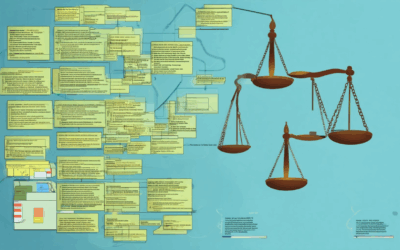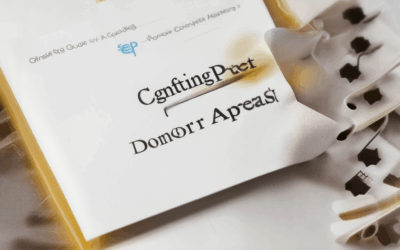In today’s increasingly digital world, nonprofits and nongovernmental organizations (NGOs) are more vulnerable than ever to cyber threats, data breaches, and other digital security risks. With limited budgets and a reliance on donations and grants, these organizations often operate with constrained resources, making them prime targets for malicious actors. However, staying ahead of potential threats and safeguarding sensitive data doesn’t have to be overwhelming. In this article, we’ll explore the essential measures every nonprofit must know to unlock digital security and protect their operations effectively. From understanding the unique challenges faced by NGOs to implementing practical strategies, this guide will provide actionable insights to help your organization thrive in a secure digital landscape.
Key Takeaways
– Prioritize Data Protection: Safeguard sensitive donor information, financial records, and volunteer data to prevent breaches and maintain trust.
– Adhere to Regulatory Requirements: Comply with data protection laws like GDPR and CCPA to avoid legal penalties and ensure operational integrity.
– Implement Robust Security Measures: Use encryption, secure cloud storage, and multi-factor authentication to protect against cyber threats.
– Foster a Culture of Security Awareness: Train staff to recognize phishing attempts and follow best practices to mitigate internal and external risks.
– Leverage Expert Solutions: Utilize specialized platforms like NPO Expert to enhance security and streamline operations efficiently.
– Regularly Audit and Update Systems: Conduct security assessments and keep software, hardware, and protocols current to guard against evolving threats.
– Secure Online Transactions: Use HTTPS and PCI-DSS-compliant payment gateways for safe donations and build donor confidence.
– Maintain Operational Resilience: Prepare for disruptions with incident response plans and disaster recovery strategies to ensure business continuity.
– Stay Informed and Proactive: Keep up with cybersecurity trends and industry standards to protect your nonprofit from emerging threats.

What Are the Key Digital Security Measures for NPOs?
To safeguard sensitive data and maintain operational integrity, NPOs must implement robust digital security measures. Below are the essential steps to protect your organization:
Data Protection
-
- Data Encryption: Encrypt sensitive information such as donor records and financial data to prevent unauthorized access.
Access Control
-
- Multi-Factor Authentication (MFA): Require dual verification methods to secure login access for all users.
Cybersecurity Awareness
-
- Employee Training: Conduct regular cybersecurity awareness programs to educate staff on threats and prevention measures.
Monitoring and Detection
-
- Network Monitoring: Use advanced tools to monitor network traffic and detect suspicious activities in real-time.
Compliance and Auditing
-
- Regulatory Adherence: Stay updated on data protection laws (e.g., GDPR, CCPA) and ensure compliance with legal requirements.
By implementing these measures, NPOs can significantly reduce risks and protect their operations from cyber threats. For further insights, explore our Risk Management Guide and Cybersecurity Best Practices .
What Are the Top Digital Security Measures for NPOs?
We understand the critical importance of safeguarding sensitive data and maintaining trust with donors, volunteers, and stakeholders. Below are the top digital security measures every nonprofit organization (NPO) should implement:
- Data Encryption : Protect all sensitive information, including donor records, financial data, and transaction details, with robust encryption methods. Ensure all data stored both on-premises and in the cloud is encrypted.
- Access Control : Implement strict access controls to limit who can view or modify sensitive data. Use multi-factor authentication (MFA) and biometric verification to further enhance security.
- Regular Software Updates : Keep all systems, software, and applications up-to-date with the latest security patches. This helps protect against known vulnerabilities that could expose your NPO to cyber threats.
- Phishing and Social Engineering Training : Conduct regular training sessions for staff and volunteers to recognize and avoid phishing attempts and social engineering tactics commonly used by cybercriminals.
- Incident Response Plan : Develop and regularly test an incident response plan to quickly address and mitigate data breaches or security incidents. This includes notifying affected parties and taking steps to restore trust.
- Data Backup and Recovery : Create secure backups of all critical data and store them offsite. Regularly test backup restores to ensure data can be recovered quickly in case of a breach or disaster.
- Third-Party Vendor Management : Carefully vet and monitor third-party vendors, including cloud service providers and donation platforms, to ensure they adhere to high security standards.
- Secure Communication Channels : Use encrypted communication tools for internal and external interactions to prevent unauthorized access to sensitive information.
- Physical Security Measures : Implement physical security measures, such as restricting access to server rooms and using security badges for personnel entering restricted areas.
- Compliance with Regulations : Stay informed about relevant data protection laws and regulations, such as GDPR or CCPA, and ensure your NPO complies with these standards to avoid legal penalties and fines.
By prioritizing these digital security measures, NPOs can significantly reduce their risk of cyberattacks and build a stronger foundation of trust with their stakeholders. For more resources and guides on nonprofit cybersecurity, visit our Cybersecurity Guide for Nonprofits .

Best Digital Security Practices for NPOs
NPOs face unique challenges when it comes to digital security. Protecting sensitive data, maintaining donor trust, and ensuring regulatory compliance require a proactive approach. Here are the top digital security practices every nonprofit organization should adopt:
- Data Protection
- Implement strong encryption for data at rest and in transit.
- Adhere to data protection standards like GDPR, CCPA, or PCI-DSS.
- Limit access to sensitive data and use role-based access controls.
- Secure Authentication
- Enforce multi-factor authentication (MFA) for system access.
- Use secure password management practices and avoid reusing passwords.
- Regularly update software, systems, and security protocols.
- Phishing and Social Engineering Awareness
- Conduct regular security awareness training for employees and volunteers.
- Use advanced email filtering and anti-phishing solutions.
- Verify the authenticity of emails, links, and attachments before clicking.
- Third-Party Vendor Management
- Vet vendors and partners for their cybersecurity practices.
- Establish clear security policies and contractual obligations.
- Perform regular security audits and background checks on personnel.
- Donor Trust and Privacy
- Implement HTTPS and SSL/TLS for all website communications.
- Maintain transparent privacy policies accessible to donors.
- Encrypt donor data and communicate privacy practices clearly.
- Regulatory Compliance
- Stay updated on data protection laws applicable to your operations.
- Conduct regular internal and external audits to meet compliance requirements.
- Consult legal experts to ensure adherence to relevant regulations.
- Incident Response Plan
- Develop and regularly test an incident response plan.
- Establish procedures for reporting and containing security breaches.
- Provide clear guidance on data recovery and communication.
- Continuous Monitoring and Threat Intelligence
- Implement continuous monitoring for unauthorized access attempts.
- Subscribe to threat intelligence feeds and stay informed about emerging threats.
- Participate in information sharing communities for nonprofits.

Why Digital Security is Crucial for Nonprofits
Digital security is a cornerstone of modern nonprofit operations, safeguarding sensitive data and ensuring organizational resilience. Here’s why it’s essential for NPOs:
- Protection of Sensitive Data : Nonprofits handle vast amounts of sensitive information, including donor details, financial records, and volunteer data. A breach can expose this data, leading to identity theft, fraud, and reputational damage.
- Avoiding Legal Consequences : Failure to implement robust security measures can result in violations of data protection laws, hefty fines, and legal actions. Nonprofits must adhere to regulations like GDPR and CCPA to remain compliant and avoid penalties.
- Maintaining Operational Continuity : Secure systems prevent disruptions caused by cyberattacks, ensuring smooth operations and service delivery. This is critical for organizations reliant on donations and community support.
- Fostering Trust with Stakeholders : Trust is the foundation of nonprofit success. Secure practices reassure donors, volunteers, and partners that their information is safe, fostering long-term relationships and sustained support.
- Compliance with Industry Standards : Adhering to best practices in cybersecurity demonstrates professionalism and commitment to ethical operations, which can enhance credibility and attract more supporters.
To stay ahead, many NPOs turn to specialized platforms like NPO Expert , which offers tailored solutions and resources to enhance security and efficiency. By adopting best practices and leveraging advanced tools, nonprofits can mitigate risks and uphold their mission-critical operations securely.
What Are the Critical Digital Security Considerations for NPOs?
NPOs handle sensitive data, manage financial resources, and engage with donors, making them prime targets for cyberattacks. Implementing robust digital security measures is essential to protect your organization, maintain donor trust, and ensure smooth operations. Below are the critical digital security considerations for NPOs:
- Data Protection
- Encrypt sensitive information, including donor records, payment details, and personal data.
- Use secure cloud storage solutions and ensure all data is backed up regularly.
- Train staff to recognize and report suspicious activities, such as phishing attempts or unauthorized access.
- Access Control
- Limit access to sensitive systems and data to only authorized personnel.
- Use multi-factor authentication (MFA) for all user accounts.
- Regularly review and update user permissions to minimize the risk of internal breaches.
- Incident Response Plan
- Develop a clear incident response plan to address potential data breaches or cyberattacks.
- Conduct regular drills to test your team’s ability to respond effectively.
- Communicate transparently with affected stakeholders, including donors and beneficiaries, in the event of a breach.
- Software and Hardware Updates
- Keep all software, including operating systems and applications, up to date.
- Use trusted antivirus and anti-malware solutions to protect against known threats.
- Ensure all devices, including laptops and mobile phones, have strong passwords and are secured with encryption.
- Encryption
- Encrypt all data stored both on-premises and in the cloud.
- Use HTTPS for all online transactions and communications.
- Implement SSL/TLS certificates for secure data transmission.
- Phishing Awareness
- Provide regular cybersecurity training for all staff members.
- Use email filtering tools to detect and block phishing emails.
- Educate your team on recognizing suspicious links and attachments.
- Third-Party Vendor Management
- Vet third-party vendors, such as cloud providers and payment processors, to ensure they meet your organization’s security standards.
- Require contracts that include data protection clauses and liability provisions.
- Monitor vendor performance and terminate relationships if security standards are not met.
- Physical Security
- Secure office spaces with access controls, surveillance cameras, and alarms.
- Store sensitive documents and equipment in locked cabinets.
- Conduct regular physical security audits to identify vulnerabilities.
- Regular Audits and Monitoring
- Perform regular security audits to identify gaps in your current security measures.
- Use monitoring tools to track network traffic and detect unusual activity.
- Stay updated on the latest cybersecurity trends and threats affecting NPOs.
By implementing these digital security measures, NPOs can significantly reduce their exposure to cyber threats and ensure the safety of their operations and data. Remember, proactive security practices are essential to maintaining trust with donors, volunteers, and other stakeholders.
Learn more about compliance best practices for NPOs.

Best Digital Security Practices for NPOs
We understand the critical role that digital security plays in safeguarding your nonprofit organization (NPO). To help you stay ahead of potential threats, we’ve compiled a list of essential digital security practices tailored for NPOs:
- Data Protection:** – Implement robust data encryption for all sensitive information, including donor records, financial data, and volunteer communications. Use HTTPS for all online transactions and ensure all data stored on the cloud is encrypted.
- Secure Online Donations:** – Use secure payment gateways to process donations and ensure they comply with PCI-DSS standards. Provide clear privacy policies on your website to build trust with donors.
- Regular Security Audits:** – Conduct regular security audits to identify vulnerabilities in your systems and infrastructure. Work with cybersecurity experts to address any findings promptly.
- Employee Training:** – Train all staff members on cybersecurity basics, including recognizing phishing attempts and using strong passwords. Establish a culture of security awareness within your organization.
- Compliance with Regulations:** – Stay updated on data protection laws and regulations, such as GDPR or CCPA, that may apply to your operations. Ensure your practices align with these requirements to avoid legal penalties.
- Backup and Disaster Recovery:** – Regularly backup important data and store it securely offsite. Have a disaster recovery plan in place to restore operations quickly in case of data loss or system breaches.
- Monitor for Threats:** – Use monitoring tools to track suspicious activities on your network and respond promptly to potential threats. Set up alerts for unusual login attempts or unauthorized access.
- Limit User Access:** – Restrict access to sensitive data to only those who need it. Use role-based access controls to minimize the risk of internal threats.
- Stay Updated on Trends:** – Keep abreast of the latest cybersecurity threats and trends, especially those targeting nonprofits. Engage with industry groups and forums to share knowledge and best practices.
To further assist your organization, we recommend exploring our Security Tools section for recommended solutions and resources. By implementing these practices, you can protect your NPO’s assets, maintain donor trust, and ensure compliance with industry standards.
Conclusion
Digital security is a cornerstone of modern nonprofit operations. By adopting these best practices, your organization can mitigate risks, protect sensitive information, and foster a secure environment for everyone involved. Stay proactive and regularly review your security measures to adapt to evolving threats.





0 Comments